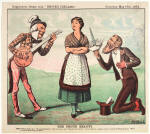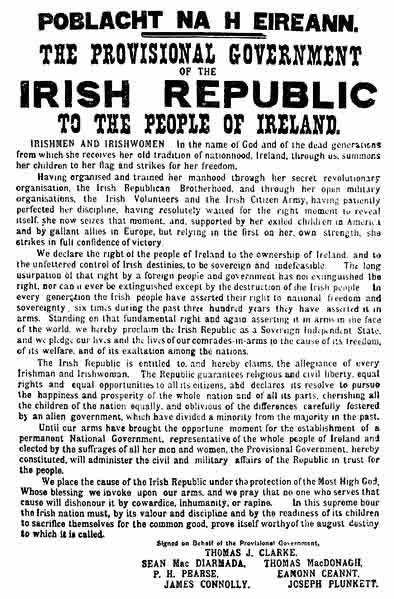A FACTBOOK OF IRISH HISTORY
From the Earliest Times to 1969
by Denis Fahey
.jpg)
To read the first few pages
.jpg)
%2045.jpg)

%204.jpg)

|
Denis Fahey ... ... a retired banker, has been fascinated by Irish history all his adult life. He can be contacted at:
A Factbook of Irish History is the fruit of ten years of pains-taking research.
Table of Contents: Go to LOOK INSIDE .
|
... is a fascinating collection of facts and figures on Irish history, from the dawn of civilisation until the end of the 1960s. Are you curious about Irish history? Did you know that Brian Boru's daughter was married to the Viking King of Dublin? Ever wonder what Red Hugh O'Donnell looked and sounded like? Do you know what tumblers did for a living? Surely you have many questions about Irish history. Think of the famous dates: 1916, 1798, 1014, and 1169. Ever wonder about the Ancient Celts, the Vikings, the Normans, Protestant Ascendancy and the Anglo-Irish? The answers are here. Whatever your question on Irish history, this collection of more than 3,000 fascinating facts from the earliest times to 1969 probably contains the answer. These historical facts have been grouped into more than 100 categories, making the book extremely easy to use. Just click on LOOK INSIDE to see the full table of contents. Ten years rigorous research, compiling and cross-checking from more than more than 800 primary and secondary sources including every major 19th century Irish historical work ensures that the Factbook of Irish History is as accurate as possible. Extensive cross-referencing makes this 250,000 word Factbook an invaluable aid for teachers, students and anyone interested in Ireland's past. It will most likely answer any question you could possibly have on Irish history. In the Factbook of Irish History you can find the life-dates of hundreds of historical figures, a comprehensive collection of historic nicknames, as well as thousands of snippets of information: |
The first battle of Moytura (Magh Tuired / the Plain of the Pillars), in c1890 BC, was allegedly fought near modern Kilmactranny, near Lough Arrow, in Co Sligo between the Fir Bolg and the Tuatha De Danaan over four days. The Fir Bolg supposedly lost 100,000 men and fled in defeat after the death of their king.
At Thurles, in 1174, the High King, Rory O’Connor (c1117-1198), and the King of Thomond, Donal Mor O’Brien (c1137-1194), defeated Richard Fitzgilbert (1130-1176), Strongbow, and supposedly killed up to 1,700 Normans.
In 1367, the archbishop and bishops who attended the parliament that passed the Statute of Kilkenny “fulminated” a sentence of excommunication against anyone who contravened its provisions.
Oliver Cromwell (1599-1658) and Henry Ireton (1611-1651) landed at Ringsend in Dublin, in August 1649, with 8,000 foot soldiers, 4,000 cavalry, artillery and a war chest of £20,000.
The father of the novelist Maria Edgeworth (1767-1849), Richard Lovell Edgeworth (1744 -1817), was married four times and had 22 children. Maria, a daughter of his first wife, was the second or third oldest.
In 1841, 320,000 of the 690,000 farms in Ireland had less than five acres, and 550,000 had less than 15 acres but at least half of farm output (mainly from larger farms) was sold for cash. By 1851, the number of farms under 15 acres had fallen to less than 300,000.
The first recorded use of a tricolour at a funeral was in 1901 when a flag was spread on the coffin of James Stephens (1825-1901), the founder of the IRB, who had been at Ballingarry on July 29, 1848.
“The one bright spot in the whole of this terrible situation is Ireland.” - Edward Grey (1862-1933), the Foreign Secretary, addressing the House of Commons about the international situation on August 3, 1914
Robert Barton (1881-1975), one of the signatories of the 1921 Treaty, and Erskine Childers (1870-1922), the secretary of the Irish delegation at the Treaty negotiations, had refined English accents.
Eduard Hempel (1887-1972), the German minister in Ireland during the Second World War, was allowed to remain by the government after the war. He worked as a salesman while his wife Eva ran a bakery. They returned to Germany in 1949 and he was employed by the Foreign Ministry of the Federal Government until 1951 when he retired.
%2043.jpg)